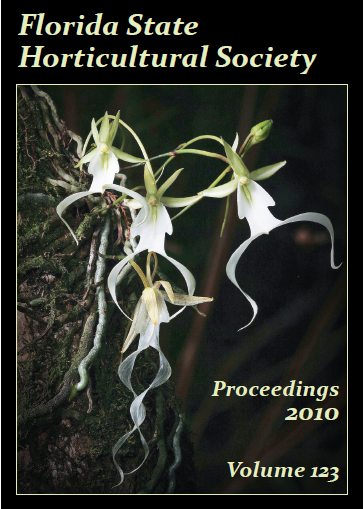Handling & Processing
Evaluation of Roma Tomato (Solanum lycopersicum) Peeling Methods: Conventional vs. Power Ultrasound
Abstract
Tomatoes are mainly consumed in processed form, which often requires peeling prior to processing. Conventional methods of peeling tomatoes includes the use of lye at considerably high concentration (10% to 15%), which generates increasing concerns on its disposal and environmental impacts, as well as material costs. In addition, lye has resulted in high peeling losses that adversely affected the yield of product. In this study, a comprehensive evaluation of peeling methods: lye (2% or 10%), power ultrasound, and lye (2%) in combination with power ultrasound were conducted. Peeling performances were evaluated based on ease of peeling and peeling losses of tomatoes after treatments. Results showed that peeling with power ultrasound in hot water yielded better ease of peeling score and much lower peeling losses than conventional lye peeling (P < 0.05). Peeling with much reduced lye concentration (2%) generated statistically (P < 0.05) comparable ease of peeling scores to the conventional 10% lye. Tomatoes treated with low concentration lye (2%) in combination with power ultrasound resulted in significantly ((P < 0.05) lower peeling losses compared to 2% or 10% lye. It was also found that further increase of exposure time to 75 s did not significantly ((P < 0.05) improve ease of peeling scores. Our findings suggest that ultrasonic power strength, not duration, was key to effective peeling and that 2% lye might be as effective as 10% for lye peeling.References
- Arthey, D. and C. Dennis. 1991. Vegetable processing. Blackie USA: VCH Publ., NewYork.
- Bayindirli, L. 1994. Mathematical analysis of lye peeling of tomatoes. J. Food Eng. 23:225–231.
- Cantwell, M. 2006. Report to the California Tomato Commission Tomato variety trials: Postharvest evaluations for 2005. University of California, Davis.
- Clark, P. 2007. Ultrasonics in food processing. Food Technol. 61(3): 67–69.
- Das, D.J. and S.A. Barringer. 2005. Evaluation of processing tomatoes from two consecutive growing sasons: Quality attributes, peelability and yield. J. Food Process. Preserv. 30:20–36.
- Das, D.J. and S.A. Barringer. 2006. Potassium hydroxide replacement for lye (sodium hydroxide) intomato peeling. J. Food Process. Preserv. 30(1):15–19.
- Feng, H. 2008. Tomato peeling by ultrasound. Unpublished personal communications.
- Feng, H. and W. Yang. 2008. Power ultrasound. Food Sci. and Technology Intl. 14:433–436.
- Fellows, P. 2000. Food processing technology principles and practice, 2nd Ed. CRC Publ., Boca Raton, FL.
- Garcia, E. and D.M. Barrett. 2005a. Peelability and yield of processing tomatoes by steam or lye. J. Food Process. Preserv. 30(1):3–14.
- Garcia, E. and D.M. Barrett. 2005b. Evaluation of processing tomatoes from two consecutive growing seasons: Quality attributes, peelability and yield. J. Food Process. Preserv. 30(2006)20–36.
- Lopez, A. and P. Gomez. 2004. Comparison of color indexes for tomato ripening. Horticultura Brasileira 22(3):534–537.
- Martini, Silvana. 2007. Ultrasonic spectroscopy in lipid food systems. Food Technol. 61(2):40–44.
- Phillips, R. 1996. Efficient peeling technology. Environmental and Productivity Technology Innovation for the Food Manufacturing Industry PT-2-B-(14).
- Rao, M.R. and B. Choudhury. 1981. Studies on canning-qualities of tomato. Scientia Hort. 14(4):299–305.
- Suslow, T. and M. Cantwell. 2010. USDA tomato ripeness color chart. Postharvest Technology Research and Information Center, Department of Plant Sciences, University of California, Davis.
- Toker, I. and A. Bayindirli. 2003. Enzymatic peeling of apricots, nectarines and peaches. Lebensmittel-Wissenschaft und-Technologie 36(2):215–21.
- United States Department of Agriculture. 1991. U.S. standards for grades of fresh tomatoes. USDA, Agr. Mktg. Serv., Washington, DC.
- USDA Economic Research Service. Vegetables and melons: Tomatoes. Available from: <http://www.ers.usda.gov/briefing/vegetables/tomatoes.htm>. Accessed: 5 Nov. 2009.
- Wongsa-Ngasri, P. 2004. Ohmic heating biomaterials: Peeling and effects of rotating electric field. PhD Diss., Ohio State University, Columbus.
- Xuan, L., P. Zhongli., B. Gokan., M. Tara, and G. Griffith. 2009. Feasibility study of using infra-red radiation heating as a sustainable tomato peeling method. University of California, Davis. Paper No. 095689 (Amer. Soc. Biological Eng. presentation).

